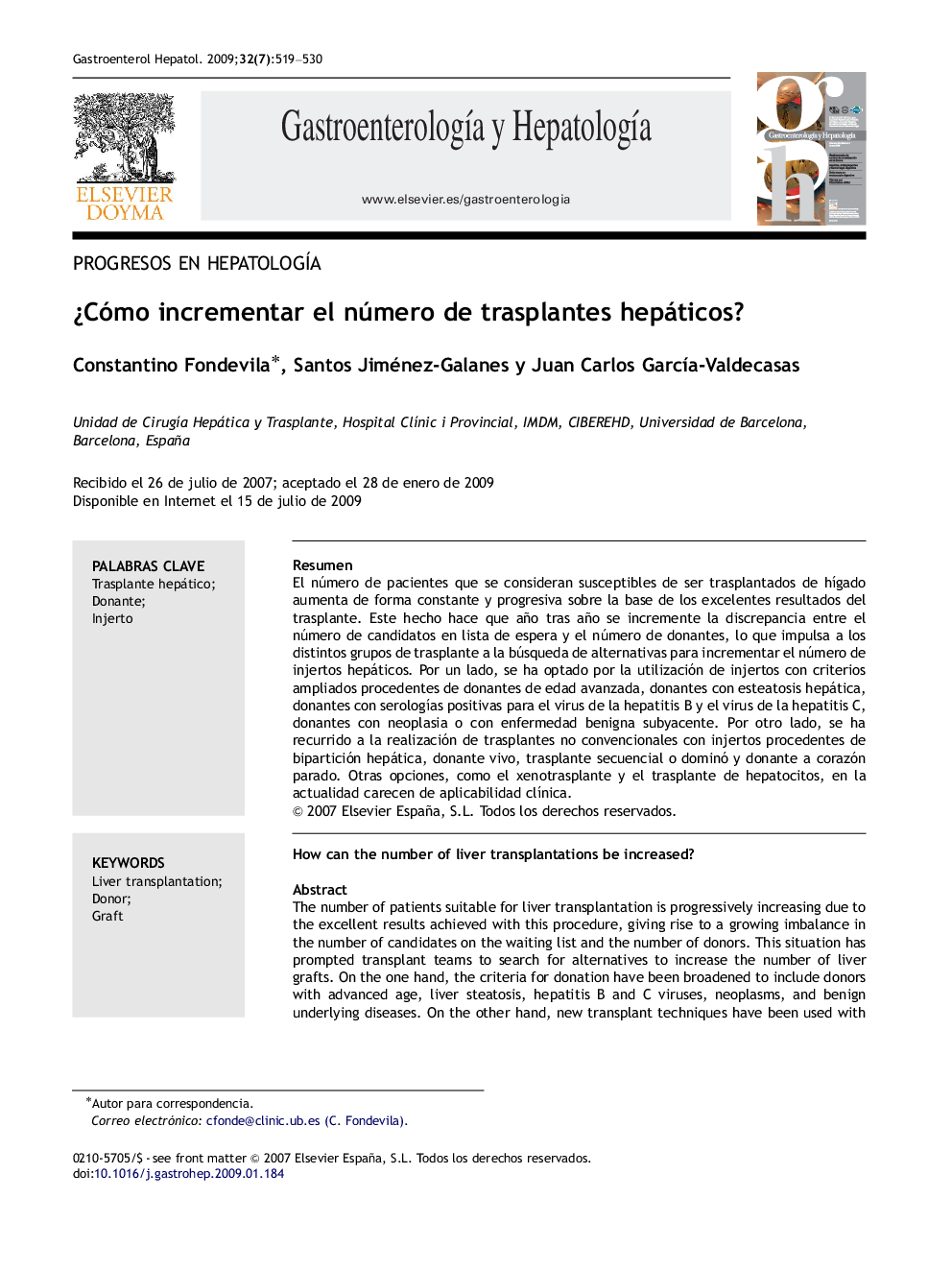| Article ID | Journal | Published Year | Pages | File Type |
|---|---|---|---|---|
| 3288948 | Gastroenterología y Hepatología | 2009 | 12 Pages |
Abstract
The number of patients suitable for liver transplantation is progressively increasing due to the excellent results achieved with this procedure, giving rise to a growing imbalance in the number of candidates on the waiting list and the number of donors. This situation has prompted transplant teams to search for alternatives to increase the number of liver grafts. On the one hand, the criteria for donation have been broadened to include donors with advanced age, liver steatosis, hepatitis B and C viruses, neoplasms, and benign underlying diseases. On the other hand, new transplant techniques have been used with grafts from split livers, living donors, sequential or domino transplants and non-heart-beating donors. Other options such as xenotransplantation and hepatocyte transplants currently lack clinical applicability.
Related Topics
Health Sciences
Medicine and Dentistry
Gastroenterology
Authors
Constantino Fondevila, Santos Jiménez-Galanes, Juan Carlos GarcÃa-Valdecasas,
